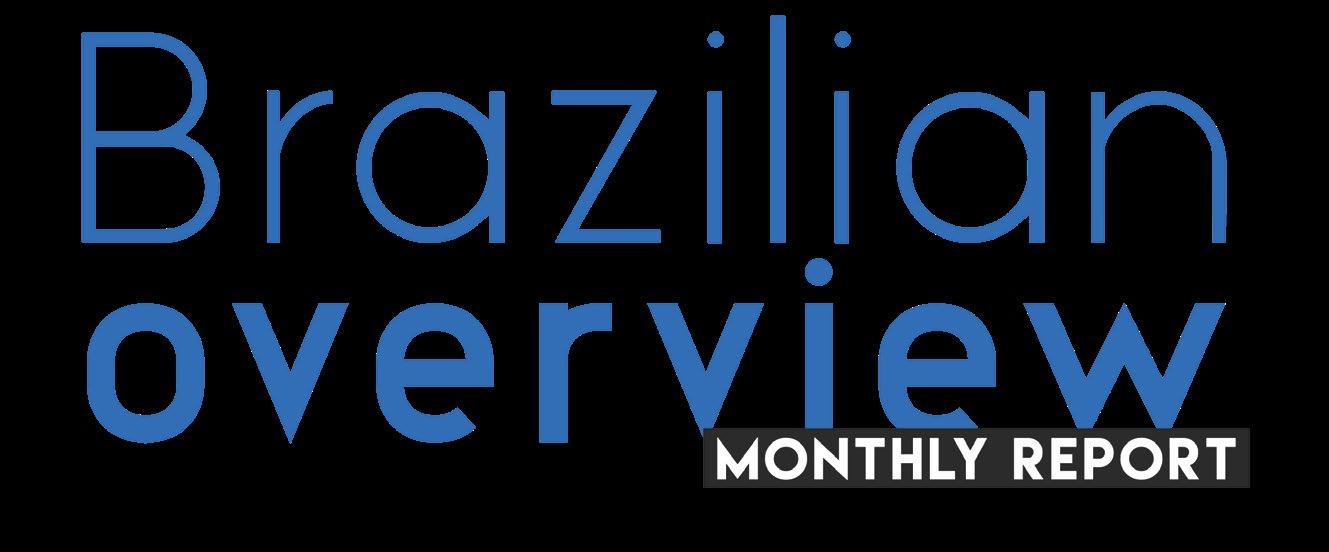the airline sector (9.8%) and travel agencies and operators (8.3%).
Despite the Selic rate close to 15%, the Brazilian economy appears to be buoyant. So much so that the IBC-Br, a preliminary indicator of GDP, showed an increase of 0.4% in February, above expectations. The record harvest should contribute to a favorable result in the first quarter. However, at some point, the economy is expected to slow down. The trend is for two distinct moments throughout this year: the first half of the year still benefiting from the positive variables inherited from 2024; and the second half of the year marked by a slowdown in economic activity, with a gradual increase in unemployment, defaults and a drop in consumption.
IMPORTANT DATA:
1
IMPORTANT FACTS:
The new IBGE estimate points to a growth of almost 12% in the 2025 harvest, reaching a historical record of 328 million tons. This result is due to the 13.3% increase in soybean production and approximately 11% in corn production, both in the 1st and 2nd harvests. Even with the international prices of these products remaining at similar levels to last year, the increase in the harvest, added to a weaker real, should contribute to a positive result in Brazilian agribusiness.
In addition, the government’s ability to stimulate the economy is increasingly limited. With the release of the public budget, there is a growing reduction in fiscal space for discretionary spending, which already raises an alert about the possibility of a lack of resources for essential areas, such as health and education, from 2027 onwards. In other words, Brazil will face significant challenges ahead, with high interest rates and the need for significant fiscal adjustments, which tend to limit the growth of the country. Therefore, although the current scenario shows positive indicators, what is emerging on the horizon — added to the external uncertainties related to the tariff hike — suggests a less promising economic evolution.
2
According to the National Confederation of Commerce (CNC), the rate of families with overdue bills in the country’s capitals was 28.6%, exactly the same as that observed in the previous month and a year ago, indicating that, even with food inflation, the booming job market has served as an important shield for household budgets.
3
After Donald Trump announced the tariff hike, the risk of a cooling of the global economy, or even a recession, increased. This affected the price of oil, which began to fluctuate around 65 dollars per barrel of Brent — the benchmark for the price of gasoline in the country. Previously, negotiations were around 70 dollars.
TRAVEL AND TOURISM
Brazil continues to be consistent in international travel sales, and the figures for the United States prove this. Of the 20 largest sources of tourists to the United States, 11 markets showed a decline, including Canada, France, Germany, Colombia, Chile and South Korea. Brazil, meanwhile, grew 1% in February, reaching 145,000 visitors to the United States that month, and 6% in March, with preliminary data indicating 141,000 tourists, just 4,000 below the peak season month of February.
Brazil is behind only the United Kingdom and Japan in long-haul markets to the United States, and of course Mexico and Canada, border markets that have historically been the largest sources of travelers to the country.
Counting only leisure travel, Brazil takes the second position among long-haul markets, behind only the United Kingdom. This is because 25,000 Japanese visitors are considered corporate (February data). In business travel, Brazil is not in the Top 5. However, in the list of student visitation, we are in fifth place, with 1,300, behind India (11,000), China (9,200), South Korea and Taiwan. In aviation, there are no immediate plans to reduce international flights, as we have already seen in some markets, including the United States. South America continues to bet on the growth of international travel this year, and American destinations stand out among the favorites. In Brazil, Florida, New York and other cities on the East Coast continue to stand out. For Europe, the new flights from the Northeast show the bet of the Airlines in International travel.
WHAT COULD
IMPACT BRAZILIANS’ DESIRE FOR INTERNATIONAL TRIPS?
1 – Global economic crisis, which could cause a slowdown in the Brazilian economy (expected to Grow 2% this year)
2 – Increased costs of travel to the United States and Europe – driving away the middle class once and for all.
3 – Difficulties in entering countries due to visa requirements or more requirements at the borders. So far, these are not problems that have affected Brazil. For the United States, the time taken to issue a US visa has improved considerably, and interviews follow a normal schedule, with just a few weeks to schedule an appointment.
That said, keep betting on some certainties: Luxury travel – increasingly popular. Especially Italy, Europe in general, Japan and the United Arab Emirates.
Cruises – the cost-benefit is unbeatable. Sporting events and concerts – fans go to great lengths to see their idols and teams. For example, there is little publicity for the FIFA Club World Cup this year in the United States – but don’t worry, fans are already making plans.
Added value – run promotions and add benefits, treats, exclusives... Brazilians love a combo, a package full of extras included. Hotels: entice with breakfast, early check-in and late check-out.
Stopovers – Brazilians love to visit more than one destination on the same trip.
Family trips – theme parks, cruises, resorts, beaches, mountains... wherever families can get together, Brazilians will be there. With infrastructure, activities and benefits, of course.







